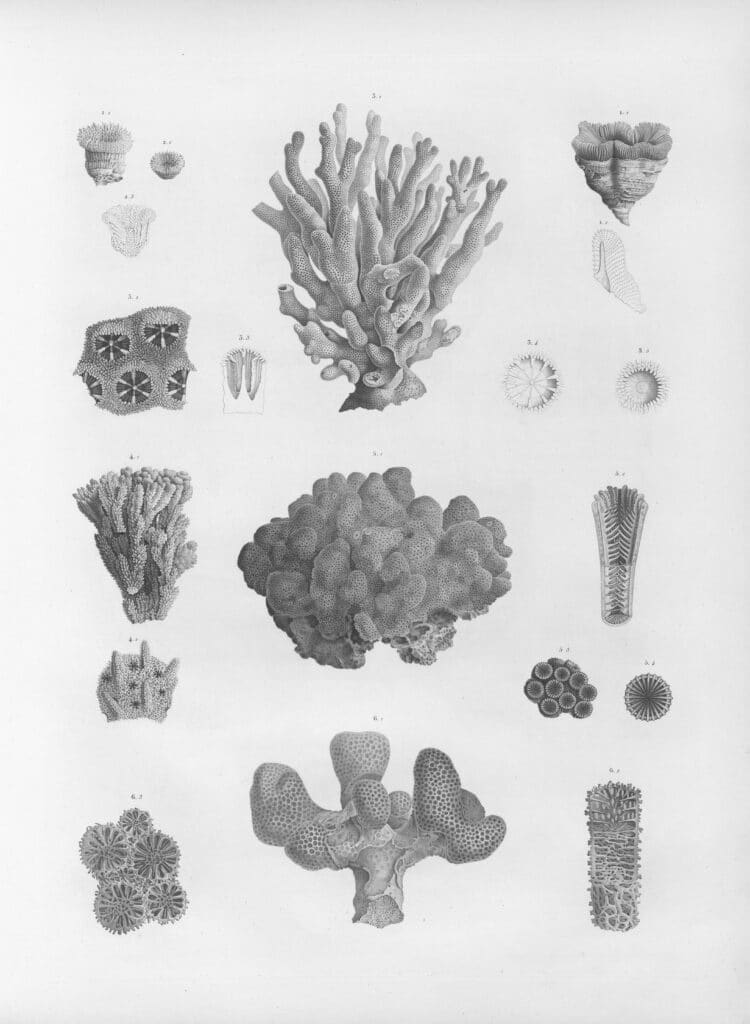In this dynamic educational landscape, one name resonates powerfully – Bloom’s Taxonomy. 😲📘

Intriguing, isn’t it? Now, what if I told you that harnessing the potential of Bloom’s Taxonomy could unlock unparalleled student potential? Would you be interested to delve deeper? Because this article is all set to explore the concept of ‘Unlocking Student Potential: Mastering Curriculum Planning with Bloom’s Taxonomy’.
Envision a scenario where students are not just passive receivers of information, but are active participants in their own learning process. Imagine a curriculum that promotes critical thinking, boosts creativity, and encourages students to apply their knowledge in practical contexts. Sounds like a dream? Well, with Bloom’s Taxonomy, this can become a reality.💡🎓
This cognitive learning tool is a powerful ally for educators, assisting them in creating effective, engaging, and differentiated learning experiences. However, mastering this tool is no easy task, which is why this article aims to act as your guide in navigating the intricate labyrinth of Bloom’s Taxonomy.
The Promise of Bloom’s Taxonomy 🗺️
The journey begins with a comprehensive understanding of what Bloom’s Taxonomy entails and the potential it holds. Originally developed in 1956 by a team of psychologists led by Benjamin Bloom, the taxonomy has been widely accepted as a hierarchical model of cognitive objectives. This model aids educators in designing lesson plans and assessments that target different levels of cognitive processes, ranging from simple knowledge recall to complex problem-solving skills.🧠
Furthermore, Bloom’s Taxonomy promises to elevate teaching from a one-size-fits-all approach to an individualized learning experience that recognizes and values the unique abilities of every student. A promise like this surely deserves a closer look, doesn’t it?
Demystifying the Six Levels of Cognitive Processes 📚
As we delve deeper into the taxonomy, we’ll take a magnifying glass to the six levels of cognitive processes. Understanding these levels, namely, Knowledge, Comprehension, Application, Analysis, Synthesis, and Evaluation, is the first step in unlocking student potential. The key lies not in using these levels in isolation but in synchronizing them to create a rich and robust learning ecosystem.🔍
And the cherry on top? This taxonomy isn’t restricted to any specific discipline, making it a universal tool that can be harnessed across various subjects. Science, Mathematics, Literature, Social Studies, you name it! No matter what the subject, Bloom’s Taxonomy has the potential to transform it.😃
Navigating the Challenges of Curriculum Planning 📝
While the benefits of Bloom’s Taxonomy are manifold, integrating it into curriculum planning is a challenge that many educators grapple with. Through this article, we aim to demystify these challenges and equip you with practical strategies to master curriculum planning with Bloom’s Taxonomy. Prepare to uncover a goldmine of tips, examples, and insights that will empower you to navigate the complexities of curriculum planning.💪
So, whether you are an educator seeking innovative ways to engage your students, an instructional designer striving to create dynamic learning experiences, or simply an education enthusiast eager to learn more about Bloom’s Taxonomy, this article is your ticket to a new realm of knowledge. Prepare to embark on a journey of discovery as we unravel the magic of ‘Unlocking Student Potential: Mastering Curriculum Planning with Bloom’s Taxonomy’. Let’s get started, shall we?✨🚀
Exploring the Power of Bloom’s Taxonomy in Curriculum Planning
As a specialized field, curriculum planning requires knowledge, dedication, and understanding of different educational theories. One such theory that has made significant contributions to curriculum planning is Bloom’s Taxonomy. This hierarchy of cognitive skills is not just a theoretical construct, but a practical tool that helps educators design effective and comprehensive curriculum.
Named after the American educational psychologist Benjamin Bloom, this taxonomy provides a framework that teachers can use to develop learning objectives, assessments, and instructional strategies. It’s a roadmap that guides the learning process from simple, foundational knowledge to more complex cognitive skills.
Before diving deeper into how Bloom’s Taxonomy can unlock student potential, let’s first understand its structure. Benjamin Bloom and his team divided cognitive learning into six stages: knowledge, comprehension, application, analysis, synthesis, and evaluation. Each stage signifies a level of understanding that students must achieve before moving to the next.
Understanding Bloom’s Taxonomy: The Three Domains
Bloom’s Taxonomy is further divided into three domains: cognitive, affective, and psychomotor. The cognitive domain involves knowledge and the development of intellectual skills. This includes the recall or recognition of specific facts, procedural patterns, and concepts that serve in the development of intellectual abilities and skills. The affective domain includes the manner in which we deal with things emotionally, such as feelings, values, appreciation, enthusiasms, motivations, and attitudes. The psychomotor domain includes physical movement, coordination, and use of the motor-skill areas.
Within the cognitive domain, Bloom defined six levels of intellectual behavior that are significant in learning. These are: knowledge, comprehension, application, analysis, synthesis, and evaluation. Each level has a number of specific outcomes associated with it, and mastery of each level is necessary before a learner can move on to the next.
Let’s delve into each domain to understand its importance in curriculum planning:
The Cognitive Domain
The cognitive domain is the most commonly used domain in curriculum planning. It focuses on the acquisition of knowledge and intellectual skills. The six stages of the cognitive domain, in ascending order, are:
- Knowledge: Recalling or recognizing information
- Comprehension: Understanding the meaning of information
- Application: Using knowledge to solve problems
- Analysis: Breaking down complex information into parts
- Synthesis: Combining information to form a unique product or viewpoint
- Evaluation: Judging the value of information or ideas
The Affective Domain
The affective domain is concerned with a learner’s attitudes, values, and emotions. It ranges from basic willingness to receive information to the integration of beliefs, ideas, and attitudes. This domain is crucial in shaping students’ attitudes towards learning and personal development.
The Psychomotor Domain
The psychomotor domain deals with the development of motor skills, physical abilities, and coordination. Although it is less emphasized in curriculum planning compared to the cognitive domain, the psychomotor domain is essential in subjects that require physical activity or coordination, such as physical education or arts.
Benefits of Using Bloom’s Taxonomy in Curriculum Planning
So, how does Bloom’s Taxonomy aid in curriculum planning? Its systematic and hierarchical nature allows teachers to design lessons that enable students to build upon what they have already learned. By using Bloom’s Taxonomy in curriculum planning, teachers can:
- Create a progressive learning environment where students gradually upgrade their understanding and skills
- Ensure a thorough understanding of a topic by focusing on each cognitive stage
- Develop assessments that accurately measure students’ understanding at each cognitive level
- Engage students with activities that match their current cognitive level
For instance, in a mathematics curriculum, teachers might start with knowledge-level questions like “What is the formula for area of a circle?” and then move on to comprehension-level tasks like explaining the formula. Next, they can engage students with application-level problems that require the use of the formula, followed by analysis-level tasks where students have to break down a complex problem. After that, students might be asked to develop (synthesize) their own method for calculating the area, and finally, to evaluate the effectiveness of different methods.
By following this approach, teachers can ensure that students’ understanding deepens at each stage, preparing them for the next level. This progressive structure is the heart of Bloom’s Taxonomy and the reason for its widespread use in curriculum planning.
Unlocking Student Potential: A Practical Guide to Using Bloom’s Taxonomy
Now that we have understood the structure and benefits of Bloom’s Taxonomy, let’s see how we can practically apply it in curriculum planning.
Firstly, identify the learning objectives for your course or lesson. These objectives should align with one or more stages of Bloom’s Taxonomy. Next, develop instructional strategies that cater to these objectives. For instance, if the objective is to enhance students’ knowledge (the first stage), you might use strategies like lecturing or reading assignments. If the objective is to develop evaluation skills (the sixth stage), strategies like debates or critical discussions could be useful.
Assessment is another critical aspect of curriculum planning. With Bloom’s Taxonomy, you can develop assessments that accurately measure students’ understanding at each cognitive level. For example, multiple-choice questions or quizzes might be suitable for assessing knowledge, while assignments or projects could be used to assess higher cognitive levels like synthesis or evaluation.
Step-by-step Guide to Applying Bloom’s Taxonomy in Curriculum Planning
- Identify the learning objectives for your course or lesson. Align these objectives with the appropriate stage(s) of Bloom’s Taxonomy.
- Develop instructional strategies that cater to these objectives. Make sure these strategies align with the cognitive level of your learning objectives.
- Design assessments that accurately measure students’ understanding at each cognitive level. These assessments should also align with your learning objectives.
- As you deliver the course or lesson, monitor students’ progress. Use formative assessments to identify areas of improvement and adjust your strategies as needed.
- Finally, use summative assessments to measure students’ overall understanding and mastery of the course or lesson.
Further Exploration: Bloom’s Taxonomy in Action
To truly appreciate the power of Bloom’s Taxonomy in curriculum planning, it’s beneficial to see it in action. The following video, titled “Bloom’s Taxonomy: Why, How, & Top Examples” by Prodigy Math Game, provides practical examples of how Bloom’s Taxonomy can be applied in a classroom setting:
“Bloom’s Taxonomy: Why, How, & Top Examples” – Prodigy Math Game
This video illustrates how each stage of Bloom’s Taxonomy can be practically applied to enhance students’ understanding and cognitive skills. If you’re an educator or involved in curriculum planning, this video is a must-watch.
A Comparative Look at Bloom’s Taxonomy
While Bloom’s Taxonomy is a powerful tool in curriculum planning, it’s not the only educational theory out there. It’s essential to understand how it compares to other models and theories to truly appreciate its advantages.
| Bloom’s Taxonomy | Gardner’s Multiple Intelligences | Marzano’s New Taxonomy |
|---|---|---|
| Focuses on cognitive processes, divided into six stages. | Focuses on eight different ‘intelligences’ or cognitive abilities, suggesting that individuals have strengths in different areas. | Similar to Bloom’s, but adds a ‘self-system’ level that emphasizes the importance of students’ attitudes and beliefs in learning. |
| Linear and hierarchical, assuming that lower levels must be mastered before moving to higher levels. | Not hierarchical or linear; all intelligences are equally important and can be developed simultaneously. | Has a hierarchical structure but adds a dimension of ‘knowledge’ (information, mental procedures, physical procedures) that can be learned at any level. |
| Widely used in curriculum planning due to its simplicity and structured approach. | Used in more personalized learning approaches, as it acknowledges individual differences in learning. | Less widely used than Bloom’s, but its focus on attitude and belief makes it relevant in today’s learner-centered educational approaches. |
As shown in the table, each theory has its strengths and uses. However, Bloom’s Taxonomy stands out for its simplicity, structure, and progressive approach, making it particularly useful in curriculum planning.
Bloom’s Taxonomy: A Powerful Tool in Curriculum Planning
By now, you should have a thorough understanding of Bloom’s Taxonomy and how it can be used in curriculum planning. Its structured and progressive approach allows teachers to design comprehensive lessons that cater to each cognitive level, ensuring a deep and thorough understanding of the subject matter.
Whether you’re a new teacher or an experienced educator, Bloom’s Taxonomy is a powerful tool that can help you enhance your curriculum planning skills. Remember, the goal of education is not just to transfer information, but to build students’ cognitive skills and unlock their potential. And Bloom’s Taxonomy provides a roadmap to achieve this goal.
So, why wait? Start using Bloom’s Taxonomy in your curriculum planning today and watch your students thrive!
Conclusion
As we draw this informative exploration to a close, it’s important to recapitulate the critical elements that we’ve covered in this article. We began our discussion by delving into the intricacies of Software Engineering, shedding light on its central principles and underpinning methodologies. As a field rooted in logic, mathematics, and scientific investigation, it serves as the cornerstone of today’s digitalized world, enabling us to create and implement software solutions that solve complex problems and cater to diverse user needs.
Our journey continued as we dissected the key stages involved in the software development lifecycle (SDLC). From requirement analysis and design, to implementation, testing, deployment, and maintenance, each phase contributes significantly to the creation of high-quality, efficient software systems. This systematic approach not only facilitates the management of software development projects, but also ensures the delivery of products that are robust, scalable, and maintainable.
Subsequently, we turned our attention to the multifaceted role of a technical writer within the software engineering landscape. As individuals skilled in breaking down complex information into digestible content, technical writers play a pivotal role in bridging the gap between technology and its users. By crafting clear, concise, and comprehensive documentation, they enable users to understand, use, and troubleshoot software applications effectively.
Furthermore, we explored a variety of effective technical writing strategies, underscoring the importance of understanding your audience, using plain language, incorporating visuals, and staying organized. Additionally, we highlighted the need for consistent review and revision, reinforcing that technical writing is a dynamic process that requires ongoing refinement.
In conclusion, the realm of software engineering and technical writing is vast, complex, and continuously evolving. To navigate it effectively, one must be equipped with a solid understanding of its fundamental concepts and methodologies, as well as the ability to communicate technical information in a clear and comprehensible manner.
As we venture further into the digital age, the value and relevance of these skills will only continue to grow. Whether you’re a software engineer, a technical writer, or simply an enthusiast, I hope that this article has enriched your knowledge and sparked a deeper interest in these fields.
I encourage you to continue exploring, learning, and sharing your insights with others. Feel free to leave a comment below, share this article with your peers, or even apply these insights in your professional endeavors. Your participation contributes to a more informed, collaborative, and technologically-advanced community. Remember, knowledge is power, and sharing it is empowering! 🚀
For further reading, here are a few reputable resources:
– The Institute of Electrical and Electronics Engineers (IEEE): https://www.ieee.org/
– The Society for Technical Communication (STC): https://www.stc.org/
– Association for Computing Machinery (ACM): https://www.acm.org/
Thank you for joining me on this journey. Until next time, stay curious and keep exploring! 🌐
References:
1. IEEE. (2018). Software Engineering Body of Knowledge. Retrieved from https://www.computer.org/technical-committees/software-engineering/
2. STC. (2019). Technical Communication Today. Retrieved from https://www.stc.org/publications/technical-communication/
3. ACM. (2020). ACM Digital Library. Retrieved from https://www.acm.org/digital-library/



